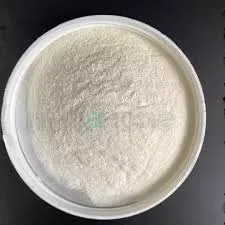
सप्टेंबर . 15, 2024 14:34 Back to list
redispersible polymer powder rdp
Understanding Redispersible Polymer Powder (RDP) A Key Ingredient in Modern Construction
Redispersible Polymer Powder (RDP) has carved a niche for itself in the construction industry due to its remarkable properties and versatility. As a crucial additive for a variety of construction materials, RDP enhances the performance of cement-based formulations, providing benefits that go beyond traditional methods.
RDP is essentially a water-soluble polymer that, when mixed with water, forms a stable dispersion. This powder is derived from the drying and processing of polymer emulsions and is typically composed of various polymers, including polyvinyl acetate (PVA), ethylene-vinyl acetate (EVA), and styrene-acrylic copolymers. These polymers lend several significant benefits to construction materials, making RDP an essential component in modern formulations.
Understanding Redispersible Polymer Powder (RDP) A Key Ingredient in Modern Construction
Moreover, RDP provides excellent flexibility and workability to formulations. This flexibility allows for the expansion and contraction of materials without cracking. It is essential in construction, where temperature fluctuations can lead to movement in structures. The improved workability means that applicators can easily spread mortars and enhance the overall efficiency of the construction process.
redispersible polymer powder rdp

Another significant benefit of RDP is its capability to improve water resistance in construction materials. Incorporating RDP into formulations helps create a hydrophobic matrix, which minimizes water penetration. This characteristic is vital in areas exposed to moisture, such as facades, bathrooms, and kitchens, as it reduces the risk of deterioration and mold growth.
In addition to these performance benefits, RDP contributes to sustainability in construction. By improving the performance of materials, fewer resources and reductions in waste are achieved. Using RDP can lead to less reliance on traditional cement, as it enhances the effectiveness of lower amounts of binders in formulations.
The compatibility of RDP with various aggregates, fillers, and additives makes it a highly versatile component. Whether it's in dry mortar formulations, repair compounds, or external insulation and finishing systems (EIFS), RDP proves its effectiveness across different applications. Its adaptability also allows manufacturers to tailor their formulations to specific requirements, optimizing performance for various climatic and environmental conditions.
In conclusion, Redispersible Polymer Powder is more than just a simple additive; it is a game-changing ingredient that significantly enhances the quality and durability of construction materials. With its ability to improve adhesion, flexibility, workability, and water resistance, RDP is an invaluable asset in the construction industry. As we move toward more sustainable building practices, the role of RDP will likely grow, driving innovation and improving the standards of modern construction solutions. For manufacturers, contractors, and architects, incorporating RDP into their projects ensures a commitment to quality and long-lasting performance.
-
The Widespread Application of Redispersible Powder in Construction and Building Materials
NewsMay.16,2025
-
The Widespread Application of Hpmc in the Detergent Industry
NewsMay.16,2025
-
The Main Applications of Hydroxyethyl Cellulose in Paints and Coatings
NewsMay.16,2025
-
Mortar Bonding Agent: the Key to Enhancing the Adhesion Between New and Old Mortar Layers and Between Mortar and Different Substrates
NewsMay.16,2025
-
HPMC: Application as a thickener and excipient
NewsMay.16,2025
-
Hec Cellulose Cellulose: Multi functional dispersants and high-efficiency thickeners
NewsMay.16,2025







